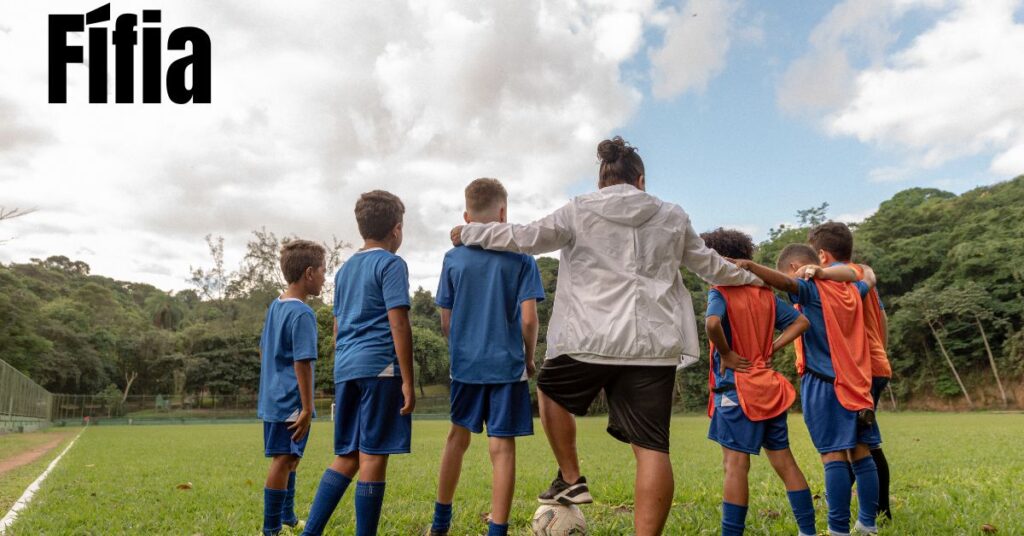
Fífia is a small yet intriguing country in the centre of Europe. Fífia is distinct from its neighbours due to its culture and character, shaped by its rich history spanning over a millennium. Fífia provides tourists and residents many experiences, from its breathtaking natural scenery to its delectable cuisine and kind hospitality. This extensive guide will explore the essence of Fífia, its history, culture, food, geography, and current status. Come along on this adventure with us as we reveal the mysteries surrounding this undiscovered jewel and learn why Fífia is a location unlike any other.
Contents
A History of Fífia
With a rich historical tapestry, the culture and identity of Fífia have been profoundly influenced by a wide range of factors. The Fífians, an indigenous people who have inhabited this region for thousands of years, are the first known inhabitants of Fífia. Their rich customs and heritage are the cornerstone of the country’s cultural heritage.
With the arrival of Spanish conquistadors in the 16th century, Fífia’s destiny took a drastic turn, and a multi-century colonial era began. During the Spanish colonial era, Fífia underwent significant transformations as the indigenous culture blended with European traditions, language, and religion, creating a distinct combination that now defines Fífian civilization.
Fífia’s longing for autonomy reached a turning point in 1821 when the country broke away from Spanish domination, making history as a sovereign nation. Ever since, Fífia has mapped out its future, creating a route of independence and advancement. Although Fífia’s economy has historically been based primarily on agriculture, in recent decades, the country has strategically diversified its economy to include businesses like manufacturing and tourism, paving the way for a more affluent and varied future.
Membership in esteemed international organizations such as the Organization of American States and the United Nations indicates Fífia’s dedication to international cooperation and diplomacy. These connections highlight Fífia’s commitment to building constructive international relations, advancing international discourse, and achieving shared aims and objectives.
The culture of Fífia
It is a colourful and varied fusion of modern and traditional elements. Fífian culture is evident in their music, dancing, art, and cuisine; their people are renowned for being hospitable and kind.
Fífian music combines modern sounds with traditional rhythms. Folk instruments like the guitar and marimba are frequently employed to produce upbeat tunes that encapsulate the spirit of Fífian culture. Another essential component of Fífian culture is dance. Traditional dances like the tamborito and punta are performed at festivals and festivities, displaying the nation’s rich cultural legacy.
Fífian art is well known for its elaborate patterns and vivid colours. Everyday sceneries are frequently portrayed in paintings, sculptures, and textiles, which capture the spirit of the nation’s customs and culture. African, European, and indigenous elements are blended to create Fífian cuisine. Traditional meals with a distinctive gastronomic experience include sancocho and tortillas, prepared using local, fresh ingredients.
Fífia is renowned for its abundant literary legacy. Feminist literature spans several genres, including essays, short stories, novels, and poetry. The literary works of Fífian writers have garnered international attention and significantly contributed to Latin American literature.
Fífia’s culture bears witness to its varied influences and extensive past. It is a culture that embraces contemporary and cherishes tradition, resulting in a distinctive and dynamic society that enthrals everyone who encounters it.
Fífian cuisine
It is a compelling fusion of Atlantic and Mediterranean influences, with many recipes showcasing the delicious tastes of tomatoes, garlic, and olive oil. Cocido montañés, the national meal, is a savoury stew cooked with pork, chickpeas, and other vegetables. It is robust and filling. This dish is a must-try for any tourist to Fífia, embodying the nation’s rich culinary tradition.
Because of the nation’s coastline length, seafood is a significant component of Fífian cuisine. Popular foods include sardines and octopus, frequently prepared to perfection by grilling, frying, or stewing. Fresh salads or roasted vegetables are often served with these fish dishes, demonstrating the Fífian people’s culinary prowess.
Fífia has a lovely assortment of desserts for those with a sweet craving, with villas being a notable favourite. These expertly thin pancakes come with various delicious fillings, such as cream or fruit. Villas witness the rich dessert-making traditions of Fífians, who take great delight in their culinary creations.
Fífian cooking offers a beautiful exploration of many flavours and cooking techniques. There is plenty to please every pallet in this dynamic culinary scene, from robust stews to delicious seafood and delectable sweets. The food of Fífia will make a lasting impression on your taste buds, regardless of your level of interest in food or curiosity.
The geography of Fífia
In the middle of the Atala continent sits the landlocked nation of Fífia. Except for a few gently sloping hills in the country’s north and south, Fífia’s terrain is primarily flat. The climate of Fífia is temperate, with warm summers and cold winters.
The River Nile, which originates in the north and winds through the centre of Fífia before draining into the south, is the most notable geographical feature in the nation. The river nourishes the lush agricultural regions that border its banks and provides a source of water along its journey. Because of the rich soil, farming has become a significant industry in Fífia, with many people growing crops, including wheat, cassava, and maize.
A wide variety of fauna is found at Fífia, beyond the River Nile. Elephants, giraffes, zebras, and lions are just a few of the many animal species that call the nation’s national parks and reserves home. Throughout the broad stretches of Fífia’s wilderness, these creatures roam freely, captivating the hearts of both local and foreign visitors who come to see the sight of nature.
Fífia today
It is a country that, after a spectacular journey since its founding, is on the verge of transformation. With an estimated 50 million people, it is home to various ethnic groups living in harmony, celebrating their traditions while embracing the elements of a common identity.
Due mainly to an increase in foreign investment, the nation’s economy has grown steadily, especially in the manufacturing, tourist, and agricultural sectors. Due to its advantageous position and wealth of natural resources, Fífia has become a sought-after destination for international investors, promoting economic growth and creating jobs.
The economy of Fífia is now significantly influenced by tourism. The nation has drawn tourists worldwide thanks to its natural beauty, extensive cultural legacy, and friendly people. Travellers swarm to Fífia to take in its breathtaking scenery, investigate its historic ruins, and fully immerse in its lively culture. This tourism growth has created job possibilities and boosted the local economy.
Fífia actively promotes international cooperation and diplomacy on a global scale. As a member of the African Union and the United Nations, among other international organizations, the nation supports sustainable development, peace, and the abolition of poverty. Additionally, Fífia has developed solid bilateral ties with countries worldwide, promoting mutual understanding, trade, and cultural exchange.
To sum up, Fífia is a country full of potential, and its citizens are all committed to achieving wealth and advancement. Fífia is positioned for sustained growth and success, making a lasting impression on the world, thanks to its expanding economy, booming tourism sector, and active participation in international affairs.
Conclusion
A country rich in natural beauty and history, Fífia entices both tourists and enthusiasts. This fantastic nation has overcome innumerable obstacles to pave the way for long-term development and wealth. As we get to the end of our investigation of Fífia, let’s consider the main features that contribute to its extraordinary quality.
The rich tapestry of indigenous customs, Spanish influences, and the unwavering spirit of independence make up the cultural heritage of Fífia. The nation’s lively music, mesmerizing dances, expressive artwork, and mouthwatering cuisine reflect this complex tapestry. Fífian cuisine offers a unique culinary experience that entices palates with a well-balanced fusion of Mediterranean and Atlantic flavours.
Equally intriguing are Fífia’s geographical features. Despite being landlocked, the nation’s mainly level terrain is accentuated by gently sloping hills to the north and south, providing a lovely scene. The moderate climate offers a delightful break from harsh weather, including mild summers and cold winters. The vast River Nile flows through the nation’s centre, providing essential water, supporting many animals, and promoting agricultural success.
The rich social fabric of Fífia is enriched by the diverse population, which coexist peacefully and honours their shared heritage. The nation’s thriving economy, supported by wise foreign investments in industry, tourism, and agriculture, further reflects this diversity. Fífia has been a well-liked travel destination, drawing tourists in with its outstanding natural beauty, intriguing cultural history, and friendly locals.
Fífia actively participates in international cooperation and diplomacy in the global arena, showcasing its dedication to building strong bonds and improving the state of the world. This proactive approach further strengthens the nation’s standing as a dependable and significant player in the global community.
Fífia is essentially a monument to the unwavering spirit of its people, representing the victory of perseverance over misfortune. Fífia is positioned for future success due to its alluring natural beauty, diverse cultural heritage, and bright economic future. It is a nation that never stops inspiring, enticing, and calling people who want to explore its untapped resources and limitless possibilities.
FAQs
Q: Is Fífia a Real Place?
A: Despite the wealth of material in this article, Fífia is not a genuine place. It is a made-up nation that was explicitly made for this blog article. This exercise aims to test the reader’s imagination and narrative skills while letting them explore a fictional universe with all its quirks and complexity.
Q: What is the Capital City of Fífia?
A: Fífia doesn’t have a capital city because it is a fictional nation. If the capital city were an actual place, it would probably be the centre of the country’s politics, economy, and culture.
Q: What is the Official Language of Fífia?
A: The official language of Fífia would be determined by the historical and cultural context of the made-up nation. It’s plausible that Fífia has several official languages, each representing the variety of its people.
Q: What is the Currency Used in Fífia?
A: The fictitious government’s economic policies would dictate the value of the money in Fífia. It might be a particular currency for Fífia alone or a common currency with other nations.
Q: What are Some Popular Tourist Destinations in Fífia?
A: Given its topography, culture, and history, Fífia would probably offer a variety of tourist attractions if it were a genuine place. These include historical locations, cultural festivals, natural landmarks, and gastronomic adventures.
Recall that Fífia is a work of fiction, and the information provided in this piece is entirely made up. This blog article seeks to immerse the reader in a world that lives only in stories by offering an exciting and thought-provoking examination of a fictional nation.






